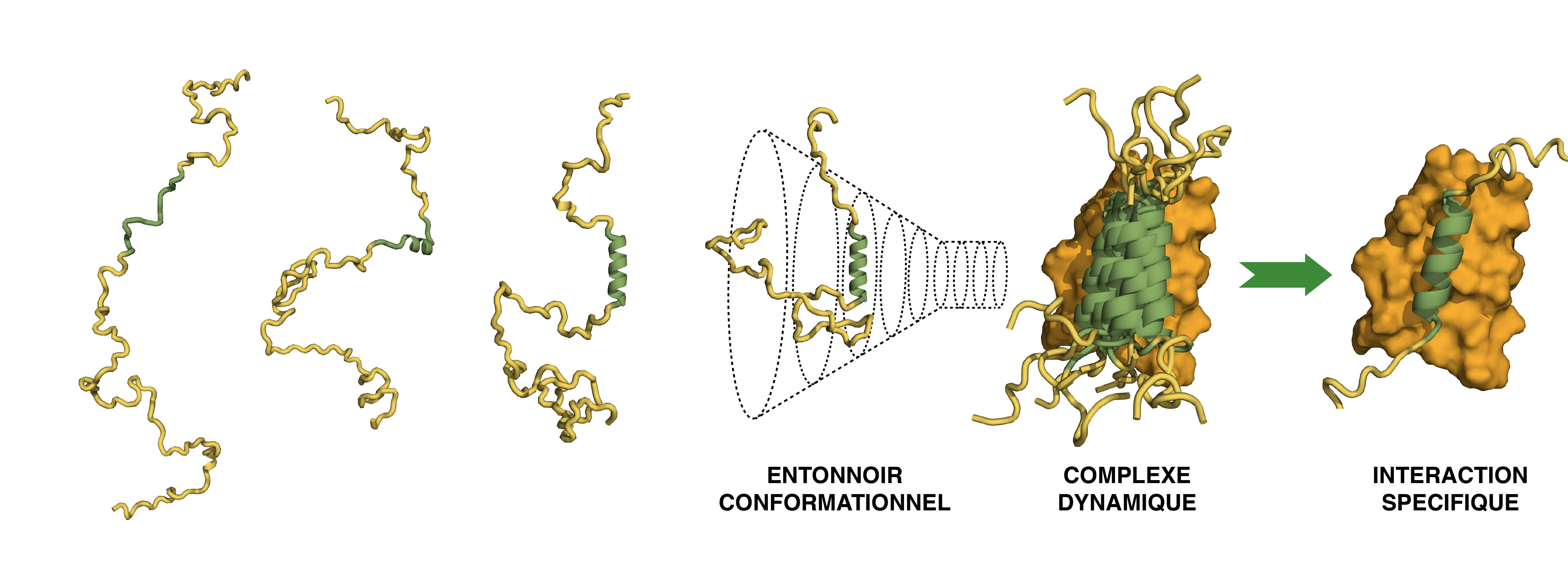Many proteins in eukaryotes (thus including humans) as well as viruses have no fixed three-dimensional structure. These “intrinsically disordered” molecules are constantly changing their conformation. The traditional methods of structural biology struggle to describe them, and moreover to account for their interactions with other molecules.
By combining multiple NMR spectroscopy measurements, a team from the IBS (CEA-CNRS-Université Grenoble-Alpes) has developed a new technical approach. The team applied this technique with the Sendai virus (a “cousin” of the measles virus) to study how a very flexible nucleoprotein (NT) adopts an intermediate conformation before recognizing a phosphoprotein (PX), forming with it a dynamic complex and ultimately binding to a specific interaction site. The researchers were able to reconstruct the sequence of events at an atomic scale, and in 3D

In its free state, NT changes conformation very rapidly. One of these conformations is preferred for the encounter with PX. NT initially remains dynamic at the surface of PX, before fixing itself to the specific site of interaction.
Aside from its technical feat, these results are especially important as the connection between NT and PX is essential for virus replication and thus host infection. Generally, disordered proteins are involved in key biological mechanisms such as cell signaling, transcription or DNA replication, as well as in many pathological processes; hence the interest in this method to better understand the function of disordered proteins, and to possibly develop new pharmacological molecules.